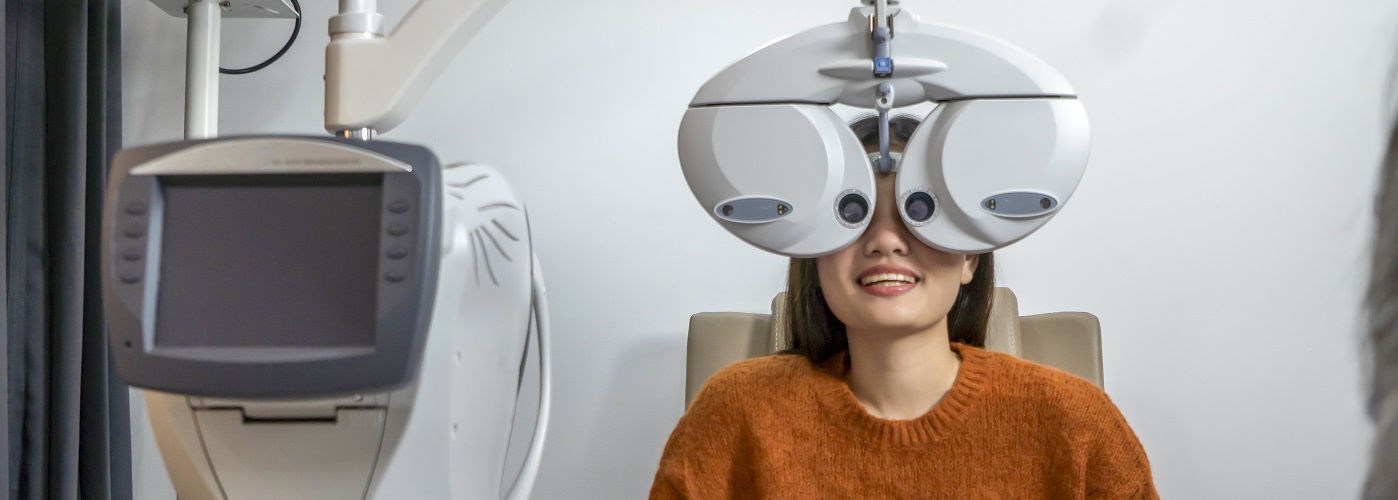
Thyroid eye disease or the Graves’ disease is an autoimmune thyroid condition that usually affects the thyroid, skin, and eyes.
When the gland produces excessive thyroid hormone, the condition is called hyperthyroidism. It usually affects the eyes, causing swelling, inflammation, and visual problems, also known as thyroid eye disease or Graves’ disease.
Since it is considered a rare disease, the exact prevalence of thyroid eye disease is not known. However, it is estimated to be 16 per 100,000 women in the general population and 2.9 per 100,000 men in the general population.
Thyroid eye disease (TED) or Graves’ disease is an autoimmune disorder. As a result, the eye muscles, tear glands, and fatty tissues behind the eye get inflamed.
This may cause the eyes and eyelids to become red, swollen, or even bulging out.
There are also cases where the swelling and stiffness of the eye muscles causes them to no longer move in line with each other leading to double vision.
The exact scientific reason or cause for TED is unknown, but it may be caused by an abnormal immune response that targets the healthy tissue of the eye.
The immune system sends out antibodies that attack the fat, muscle, and other tissues around the eye. This is because your body mistakes the tissue around your eyes as a foreign invader and attacks it. This condition is called an autoimmune disease.
As a result, the eye muscles may become stiff, causing double vision, or even bulging the eyes.
Thyroid eye disease is often associated with hyperthyroidism and takes up about 90% of the cases.
Anyone may develop TED as it is an autoimmune condition. However, some risk factors that may increase the chances of contracting it are:
The symptoms may begin as early as 6 months.
Here are some of the common symptoms of TED:
The early signs of TED may include itching, watery or dry eyes and a feeling of the grittiness of the eyes.
Patients may also notice swelling around the eyelids or in the front of the eye.
As the symptoms build up, many patients may have the fear that they may become blind. Thyroid eye disease may cause secondary glaucoma and leads to blindness.
However, it is important to get yourself treated immediately if you have noticeable symptoms in order to avoid any permanent damage to the eye.
For those who have been diagnosed with hyperthyroidism, the doctors may conduct periodic physical examinations to look for any signs of thyroid eye disease.
If suspected, further tests as mentioned below are then conducted to diagnose TED:

There are two stages or phases of TED:
As there are two phases or stages in TED, the treatment given is also based on this.
The first or active phase is the time when the disease should be treated and monitored carefully. At this stage, treatment focuses on preserving the eyesight and integrity of the cornea as well as treating double vision.
Artificial tears are used throughout the day to relieve patients from dry eyes, and gels or ointments at night.
If the disease progresses, patients may be prescribed immunosuppressive medicines. These may help to dampen the immune system that’s producing the abnormal antibodies.
In the second phase of the disease, patients may require surgery to correct double vision and to reduce eyelid retraction.
Surgery may also help in returning the eye to a normal position within the socket.
The following measures may help to prevent TED from getting worse:
Thyroid eye disease not just affects the physical health of the patients but may also impact their emotional state and social well-being. It is, therefore, important for those at risk to get regular screenings by checking their thyroid levels periodically.
Learn about the various treatment options and Ophthalmology services available at Pantai Hospitals, Malaysia.
Pantai Hospitals have been accredited by the Malaysian Society for Quality in Health (MSQH) for its commitment to patient safety and service quality.
Thyroid eye disease, Available at: https://www.yourhormones.info/endocrine-conditions/thyroid-eye-disease/ [Assessed on: 15 March 2022]
What is thyroid eye disease, Available at: https://www.webmd.com/eye-health/graves-eye-defined [Assessed on: 15 March 2022]
Thyroid eye disease, Available at: https://patient.info/hormones/overactive-thyroid-gland-hyperthyroidism/thyroid-eye-disease [Assessed on: 16 March 2022]
Thyroid eye disease (TED), Available at: https://www.btf-thyroid.org/thyroid-eye-disease-leaflet [Assessed on: 17 March 2022]
Grave’s disease, Available at: https://www.mayoclinic.org/diseases-conditions/graves-disease/symptoms-causes/syc-20356240 [Assessed on: 17 March 2022]
Thyroid eye disease, Available at: https://patient.info/hormones/overactive-thyroid-gland-hyperthyroidism/thyroid-eye-disease [Assessed on: 17 March 2022]

